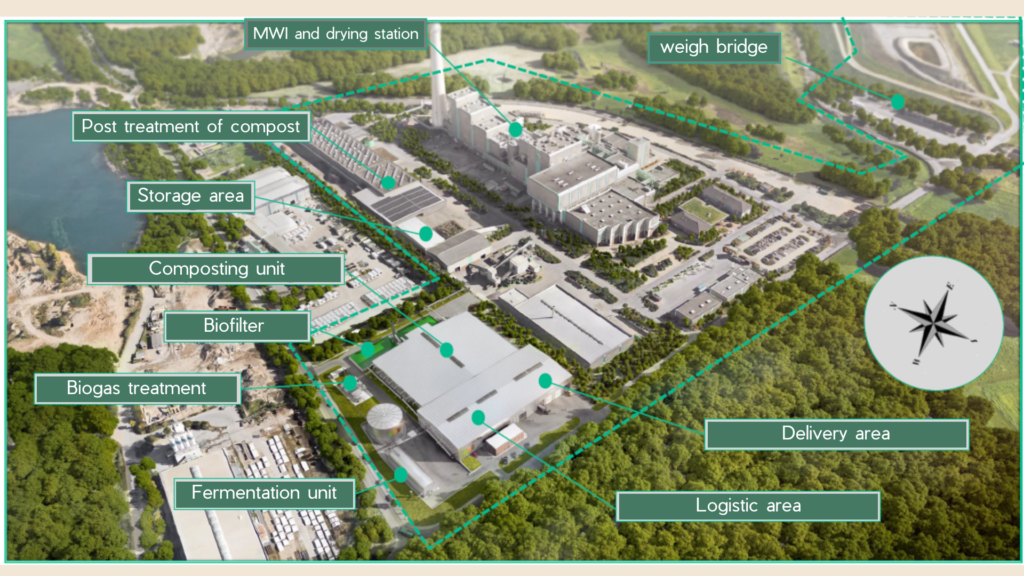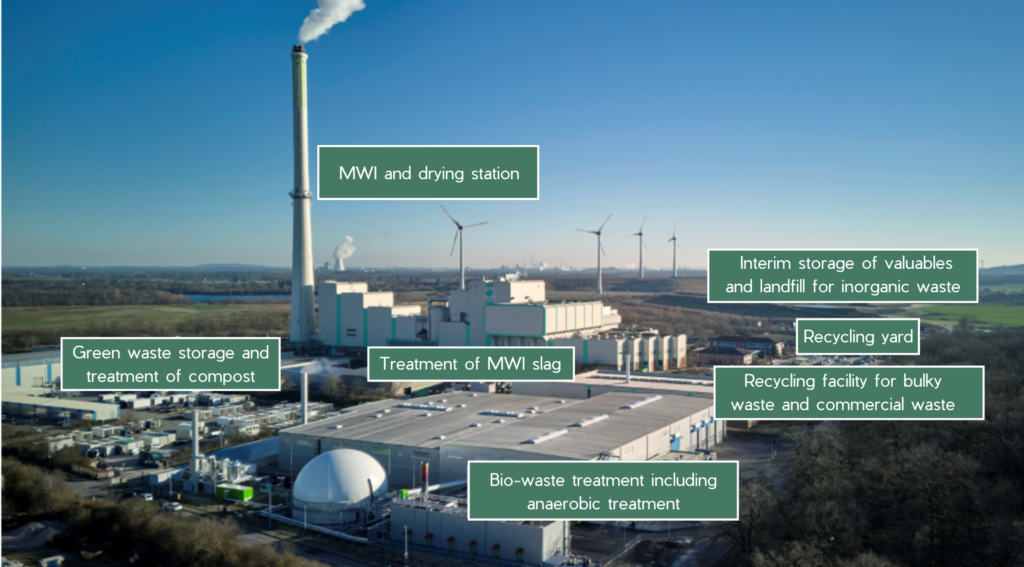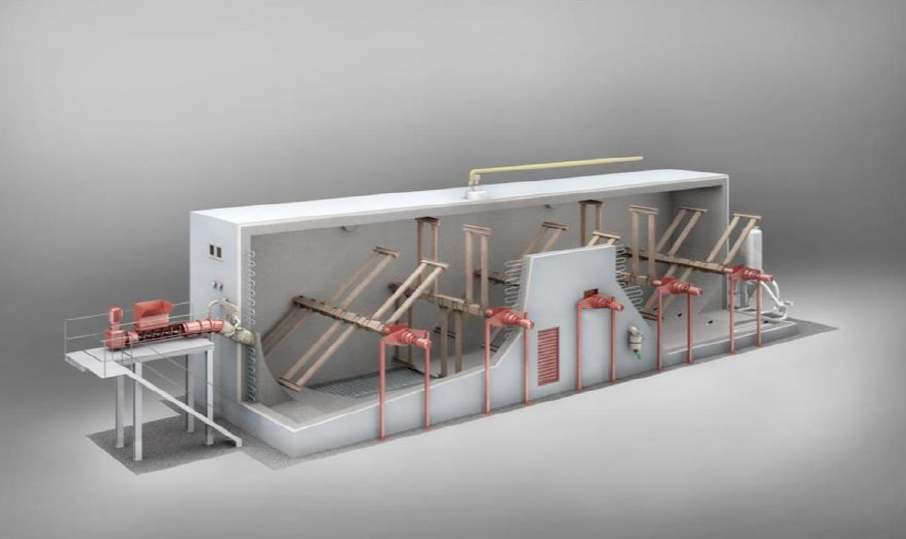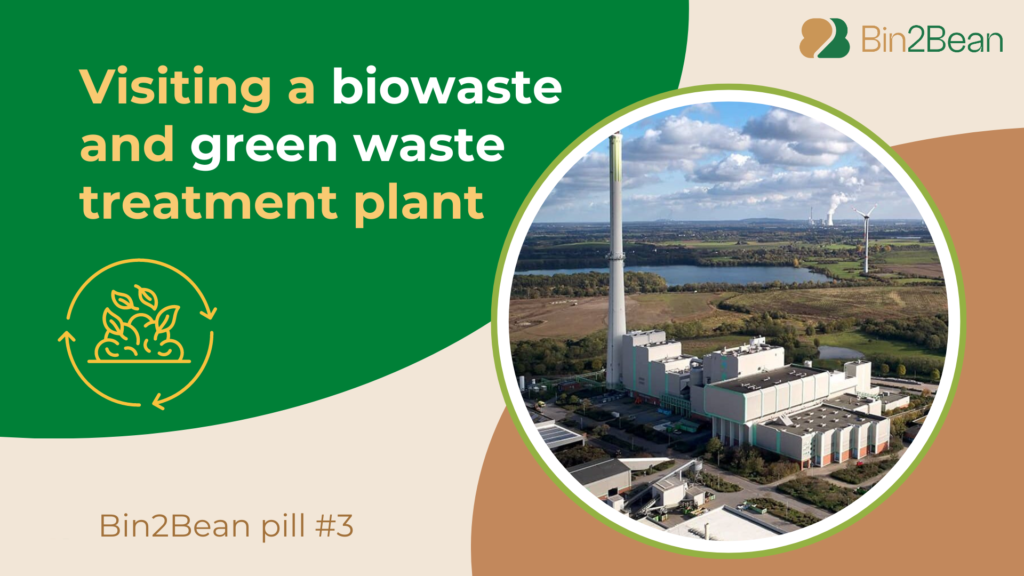Back in July 2024, the Bin2Bean partne N3, visited the biowaste management plan of KWA in Germany. Here is a brief account on the visit, from which we can learn valuable insights
Kreis Weseler Abfallgesellschaft mbH & Co. KG (KWA) is owned by Wesel County (99.8%), located in North-West Germany. It was founded about 25 years ago aiming at the installation and operation of a MWI and the management of a landfill at Asdonkshof. Kreis Weseler Abfallgesellschaft Regio mbH (KWAR), a 100% affiliated company, is responsible for the management of a bio-waste plant and the marketing of used paper and textiles.
The facility for the processing of organic waste is also placed at Asdonkshof. It is owned by BAVN, a joint venture of Wesel County and Viersen County. The collection of waste is organised by twenty two municipalities belonging to this Countys; some larger cities have their own waste management companies, while others put this service out to tender.
Waste incineration, biomass treatment, production of electricity and district heating from incineration and biogas, landfilling of inorganic waste and the processing of residual materials from the waste incineration plant are combined on this site.

Asdonkshof combined anaerobic aerobic treatment details

Asdonkshof combined anaerobic aerobic treatment Plant overview
Principles of biomass processing:
Number of inhabitants: Kreis Wesel – 450,000; Kreis Viersen – 300,000
The biomass plant has a capacity of 67,500 t/yr. Therefore, about 90 kg bio- and green waste
per inhabitant can be managed. The process is optimised to achieve the following goals:
- High-quality compost (RAL certification – first priority)
- Production of biogas (as a contribution to the German “Energiewende”)
- Avoid the production of liquid fertilisers (difficult marketing in the region)
“Quality over quantity!” is key. Therefore, the organic waste bin is essentially based on
voluntary participation by households and benefits in terms of the waste fee.
The plant was erected between 2020 and 2023 covering a new fermentation unit (plug flow,
STRABAG LARAN®) and a refurbished composting unit with an intensive and a post-rotting
step.

Asdonkshof combined anaerobic aerobic treatment plug flow reactor
Details of the process:
Waste from the brown bin, which consists of kitchen and garden waste, is accepted and checked for its quality. Considerably contaminated deliveries are excluded from bio-waste treatment and incinerated, whereby the responsible municipality must bear the costs.
The material flow is separated by screening, whereby three screen sections are produced. The finest material is fed directly to the fermentation process, the middle fraction goes to composting and the fraction > 100 mm is treated externally.
Solid material from fermentation is composted afterwards; the liquid phase is used for inoculation and moisturisation of the intensive rotting step. The sieving steps aim also at the separation of unwanted materials, i.e. plastics, stones, glass. (The configuration – smooth shredding, drum sieves plus star sieve – is similar to that in Bützberg.) The post-treatment of compost before marketing covers a flip-flop sieve and a wind shifter.
The exhaust air from the complete process is cleaned via an acidic scrubber and a biofilter. Ammoniumsulfate is a by-product of the exhaust air cleaning process that is marketed as a fertilizer. Biogas is directly converted into electricity on site. The waste heat is used for the fermenter
and other installations.
Henning Friege (N3)

